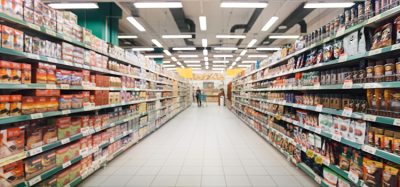Pork quality and carcass chilling
- Like
- Digg
- Del
- Tumblr
- VKontakte
- Buffer
- Love This
- Odnoklassniki
- Meneame
- Blogger
- Amazon
- Yahoo Mail
- Gmail
- AOL
- Newsvine
- HackerNews
- Evernote
- MySpace
- Mail.ru
- Viadeo
- Line
- Comments
- Yummly
- SMS
- Viber
- Telegram
- Subscribe
- Skype
- Facebook Messenger
- Kakao
- LiveJournal
- Yammer
- Edgar
- Fintel
- Mix
- Instapaper
- Copy Link
Posted: 26 April 2013 | Lars Kristensen, Section Manager, Danish Meat Research Institute | No comments yet
Chilling of hot carcasses is an important process in the meat production chain, and the rate of chilling especially has a major impact on meat quality, chill loss, shelf-life and microbial safety. The carcass temperature just before chilling is normally in the range of 39 – 40°C, and the goal is to reach approximately 5°C 20 to 24 hours after slaughter when the carcasses usually are cut and boned. Air is generally used to remove heat from the surface of the carcasses, and the rate of chilling is controlled by both air speed and air temperature, the latter going from below -20°C in quick chilling tunnels to above 0°C in conventional, slow, batch chilling systems. In spray chilling systems, the evaporation of water sprayed onto the surface of the carcasses helps to remove heat from the carcass. This article will focus on the effect of pig carcass chilling on meat quality.
Chilling of hot carcasses is an important process in the meat production chain, and the rate of chilling especially has a major impact on meat quality, chill loss, shelf-life and microbial safety. The carcass temperature just before chilling is normally in the range of 39 – 40°C, and the goal is to reach approximately 5°C 20 to 24 hours after slaughter when the carcasses usually are cut and boned. Air is generally used to remove heat from the surface of the carcasses, and the rate of chilling is controlled by both air speed and air temperature, the latter going from below -20°C in quick chilling tunnels to above 0°C in conventional, slow, batch chilling systems. In spray chilling systems, the evaporation of water sprayed onto the surface of the carcasses helps to remove heat from the carcass. This article will focus on the effect of pig carcass chilling on meat quality.
Chilling of hot carcasses is an important process in the meat production chain, and the rate of chilling especially has a major impact on meat quality, chill loss, shelf-life and microbial safety. The carcass temperature just before chilling is normally in the range of 39 – 40°C, and the goal is to reach approximately 5°C 20 to 24 hours after slaughter when the carcasses usually are cut and boned. Air is generally used to remove heat from the surface of the carcasses, and the rate of chilling is controlled by both air speed and air temperature, the latter going from below -20°C in quick chilling tunnels to above 0°C in conventional, slow, batch chilling systems. In spray chilling systems, the evaporation of water sprayed onto the surface of the carcasses helps to remove heat from the carcass. This article will focus on the effect of pig carcass chilling on meat quality.







